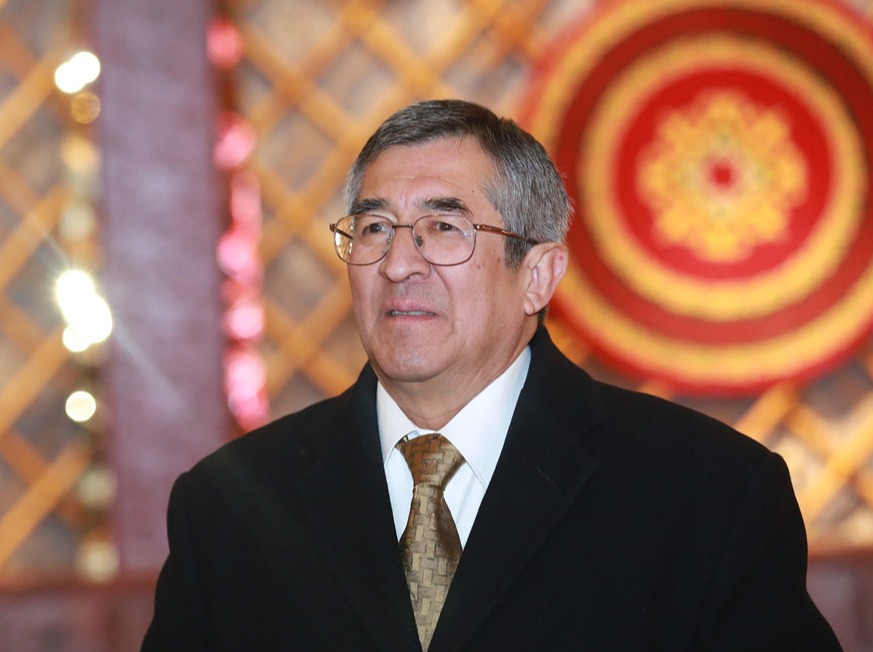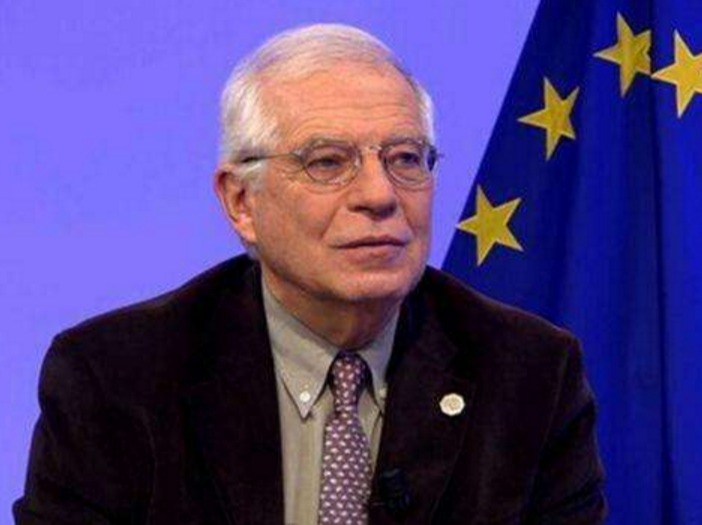Brief Introduction to the Author:
H. E. Mr. JUAN C. CAPUNAY, Acadamy Research Fellow for Research Centre for Pacific Studies, Beijing Foreign Studies University, Acadamy Research Fellow for Haiyi Institute. He was the former Peru Ambassador to P.R.China, former Executive Director for APEC Secretariat.

Globalization, Interdependence and connectivity are nowadays the tools for the modernization of the economies. Emerging powers have replaced the traditional first world economies. However, since 2016 this new political and economic scenario has been conceptually altered by waves of protectionism and unilateralism. In particular, those proposals oriented to diminishing the confidence in the multilateral fora and in the principles of the open economy.
From an economic and commercial perspective, the Asia Pacific region have a dynamic and complementary structure, which had influenced since early 90's the formulation of its policies. The intraregional relations of the last three decades have been characterized initially by dramatic changes in the political systems and an opening of the economies, but later by the introduction of negative measures proclaiming the era of the deglobalization. On the other hand, Asia Pacific, as well the rest of the world, is confronting one of the most devastating sanitary emergencies, the epidemic named COVID 19, that, in less than six months, have affected the national economies, the consumption levels and the life style of the region, creating a new normal in the functioning of the societies and governments.
In this context, it is possible to observe also that since late 1990's the so-called traditional economic powers were replaced by emerging economies as they are competing for access to goods and financial services markets. Many of the loans and financial flow to the developed countries are proceeding from those emerging economies. This is the result of structural reforms implemented by the Governments with the aim to adapt their economies to the globalization's requirements of efficiency and competitiveness. The emerging economies of Asia Pacific coincided in a will to guide their economic potential by means of investments projects, commercial expansion and digital transformations. The Asian countries, in particular China, Japan, Korea and the ASEAN, have explored innovate ways of development through education, PPP and R&D. At the same time, Latin America and Oceania countries have common objectives and interests with the Asian miracle actors and compliment the opportunities of business, investments and access to the markets. As a result, they have increased its participation in the new structure of the regional and world economy and they have incorporated, as a main component of their development, a number of policies and measures to promote transnational business and political opening. They seek to consolidate their position in the international community by means of interchanges and shared aspirations.
It is relevant to indicate that this political and economic insertion of Asia Pacific into the global scenario have produced benefits but also challenges. In particular, in the modalities of consumption, capacity production and investment structures of their societies. The small economies initiated a restructuring of their production structures introducing new technologies and advance innovation in order to diversify its offering, to became exporters of value and to participate of the FTAs network and the regional integration initiatives. The adaptation of SMEs to this process was a very important aspect of its national development plans. SME's were encouraged to associate or to form conglomerates which will allow them to participate into production chains.
This beneficial and pragmatic insertion of the Asia Pacific economy into the world economy started late 1970's. During those years, Asia Pacific initiated the discussion of the creation of an important comprehensive and multisectoral integration framework with the aim to adopt regional strategic alliances and business partnerships. Those arrangements allowed them a better used of industrial fragmentation to improve its capacity production and enjoy the benefits of the intraregional commerce and investments. In the first place, the Pacific Basin Economic Cooperation (PBEC), that reunited the private sectors of Pacific Rim countries. It was the opening scenario for the negotiations of private sector cooperation mechanisms and trade arrangements. Lately, the regional proposal was enriched with the establishing of the Pacific Economic Cooperation Council (PECC), its functioning involved the pillars of the Asian regional development, which are private sector, academic centers and government policies. PECC oriented their deliberations to the formulation of the basis for the regional integration, investments facilitation, trade liberalization and technical cooperation. In the mid of 1980's, the governments decided to establish the Asia Pacific Economic Cooperation Fora (APEC), which became in the most dynamic regional architecture of integration and development. Early 2000's APEC open the consultation to implement one of its main instruments, which is the Free Trade Area Asia Pacific (FTAAP) agreed by the Bogor Goals of 1994. With the aim to reinforce the negotiation toward the FTAAP, the Trans Pacific Partnership (TPP) was launching as the first regional approach.
At the subregional level, it is important to highlights the role of ASEAN as a conectivity initiative to promote the cooperation, integration and development of its 10 members. ASEAN have implemented policies oriented to shared tasks, advance in the formulation of cooperative rules and to deepen its position as a key political factor in Asia. Today ASEAN is an attractive trade partner and investments foreign destination. With the aim to facilitate greater economic interdependence and a peaceful relation among its members, ASEAN decided early 2000 to create the Regional Cooperation Economic Partnership (RCEP), which is bringing stability and pragmatism to the efforts to build peace and cooperation. RCEP is playing a central role in the building of the regional architecture together with the ARF, the ASEAN RTA, and the engagements of common initiatives with the Dialogue Partners. Together with TPP, it will also contribute to the establishing of the FTAAP.
On the other hand, the Pacific Alliance was established in Latin America by Chile, Colombia, Mexico and Peru, by the initiative of President Alan Garcia of Peru. The Pacific Alliance is considered today the most dynamic economic grouping in Latin America, with 56 Observers Members, mainly from America, Asia and Europe. It is an integration subregional group created with the purpose to facilitate trade with Asia, to promote investments and technical cooperation with other economies, to identify physical and institutional modalities of connectivity, to deep the institutional links in the region and to incentive the subregional private associations. It is also one of the pillars for the establishing of the FTAAP.
Nevertheless, the Asia Pacific regional integration project has been negative affected during the last 4 years by internal and external factors. Among them, The US withdraw from the TPP, the introduction of protectionism measures in the regional agenda, the confrontational policies instead of globalization goals and the opposition by the US of the participation of China in the TPP. For most of the APEC members, the no participation of China in the TPP created a difficult and conflictive scenario. For them, including Peru, China is the principal trade partner and one of the most important investors. It was difficult to understand the existence and functioning of a regional trade arrangement without the participation of the main trade partner and main market for their exports. This decision of the US Government shown at the regional level its world trade policy basis on the prevalence of unilateralism and protectionism. In a few words the "American First" attitude. More recently, since early 2019, US started meddling in China domestic affairs, now the world's second largest economy and its economic and strategic competitor in Asia. US knows that must probably China could overtake in the next decades its position as the largest economy. Washington Administration was aware that the only strategic power in Asia that could confronted its economic and political actions in the region was China. This is why this US got involved not only in sensitive chinese's domestic political issues but also questioning the presence of Chinese private sector in the American and even western markets. That was the beginning of the so-called China-US Trade War. Today, in 2020, the deep political confrontation between the Democrats and Republicans in an electoral year has aggravated this scenario and its influence in the regional agenda.
It is important to highlight here the 2013 regional integration proposal of President Xi of China named "Belt & Road" Initiative. According to his vision, culture and regional economic links are the engine to pursue bilateral relations basis on mutual confidence and a better understanding among countries. This proposal introduces into the regional architecture the different components of the modern connectivity, which are comprehensive interdependence, economic complementary and inclusion. The concept of comprehensive interdependence facilitates the better understanding among countries, the establishing of common goals and the promotion of reciprocal benefits. The economic complementary promotes trade and investments and creates an open and growth-oriented partnership environment. In this context, the programs of transfers of technology, innovation and digital transformation, improve the competitive advantages of the regional economies through the introduction of efficiency and quality to the capacity production. And the concept of inclusion, both economic and social, promotes the intercultural dialogue, reinforce the capacity building and technical education programs and supports the better participation of the small and medium in the economic process as a way to creates income and employments. The Belt Road initiative (BRI) is not oriented to change the development plans of its members. It will facilitate the insertion of the local and national economies and societies into the regional architecture and it will reinforce the capacity building and technical education programs, the health systems and the people to people's policies. Today BRI represents the political answer to the deglobalization proposals. Is an economic and strategic alternative to the recently introduced initiatives to oppose protectionism to open market, unilateralism to multilateralism and national interests to integration and interdependence.
It is also relevant to mention that a foreseeable cooperation scenario for the next decades will demand from Asia Pacific small economies efforts to consolidate its bilateral links and regional mechanisms. To this respect, the recently created Asia Investment Infrastructure Bank (AIIB), could provide them with the necessary financial flows for its infrastructure and logistic development. As an option, it could be important for the small economies to match their national and regional needs with the financial opportunities of the AIIB portfolios. The benefits of the governing rules of the AIIB and the non-existence of the conditionality principles, will allow the small economies to have a better participation at the BRI and the FTAAP.
On the other hand, due to its economic dimension and modalities of development, Asia had experienced since early 1990, growing economic territories beyond political and ideological boundaries. They were formed initially by private initiative with governmental support. An interesting aspect of those initiatives is the relationship between projects, national economies and regional objectives. With clear economics priorities, the growing economic territories are basis on pragmatic and economic oriented solutions, free trade policies, open financial markets and the introduction of innovation and social inclusion. To this respect, since early 1990 South East Nations promoted the Growth Economic Triangle (GET) as a new modality of local development. SEA turn the needs for a social and political inclusion into pragmatism solutions introducing innovation and S&T. At the same time, the development of the Special Economic Zones (SEZ) in Asia, in particular those in China like Shenzhen, Guangzhou, Tianjin, Hainan, and others in the Republic of Korea.
Today a new macro project has been launched in China. The Greater Bay Area project, the biggest integration scheme in the south of China, represents an initiative for economic cooperation across the Bay Area, an instrument for investments with a wider scope, an incentive for the development of infrastructure mega projects, a platform for trade of goods and services, a cultural framework and an option for economic, technical and social growth in the zone. It is not a traditional economic integration initiative that links the boundaries of 3 territories, it is a project that takes into consideration the needs of each territory and their perspective of growth in the determination of their procedures.
The challenges of Globalization G 4.0 open new scenarios for the Greater Bay Area project. In Guangzhou, the developments in the field of communications by Huawei and in e-commerce B2B by Jumore. In Hong Kong the entrepreneurship and competitiveness of the SME’s for trade and financing. In Macau the efficiency and quality of the creative and tourism industries and the of digital structure of Macau Association of the Belt and Road E-commerce (MABRE), created to promote trade and cooperation between Macau and the Asia Pacific. This innovative and technologic architecture will benefit not only the 65 million population of the Greater Bay Area, but also to the small economies of the Asia Pacific, its institutions and societies. The Great Bay Area could become the new Asian Silicon Valley. It could represent in China a pilot single space of "high tech dialogue and realization" for quality and efficiency growth through R&D, technological transfer, investments and trade.
The Bridge Zuhai- Macau -Hong Kong, will interconnect the region and it will provide institutional mechanisms to empowered the people and the junction of cultures. it will incentive better education, tourism, the reduction of the digital gaps, cultural understanding, business mobility and the conexion of this region with the rest of the world.
A substantial and important first step in this process could be the organization of an economic and cultural conference with the participation of small economies of the Asia Pacific countries and the megacities of the Great Bay Area. It will prove that the long history in the links between them are the solid foundations for an economic and strategic relation for the future. The conference could agree in the scope of the relations, the issues of common interest, the road map and the mechanisms to promote a comprehensive approach. In the economic and trade aspect, this initiative could serve as the link with the Belt Road Initiative and as a hub for South East Asia and Central Asia.
The dynamic of the Asia Pacific relations is lying on the identification of common opportunities. An integration commitment in the Asia Pacific could be built on the good will of the people and the political decisions of the governments toward the FTAAP. A substantial role will be playing by the Belt Road Initiative (BRI) as a regional integration framework and as the link of the Pacific Islands and Latin America with the rest of Asia. The necessary logistic and structural preparations of the national economies to participate in the regional architecture could be facilitate by the AIIB. A multicultural and multiethnic dialogue across the Pacific Rim will contribute to facilitate the fluidity of the "Asia Pacific Partnership for the Future".

Globalization, Interdependence and connectivity are nowadays the tools for the modernization of the economies. Emerging powers have replaced the traditional first world economies. However, since 2016 this new political and economic scenario has been conceptually altered by waves of protectionism and unilateralism. In particular, those proposals oriented to diminishing the confidence in the multilateral fora and in the principles of the open economy.

On 9 May, we mark Europe Day. The 70th anniversary of the Schuman Declaration offers a chance to reflect on what European integration means and on the EU’s role in the world. I want to use this blog post to do this from a personal angle, to set out why Europe as an idea and political project is worth defending.